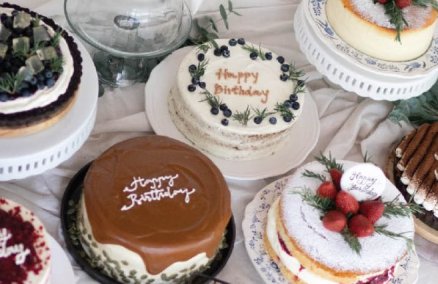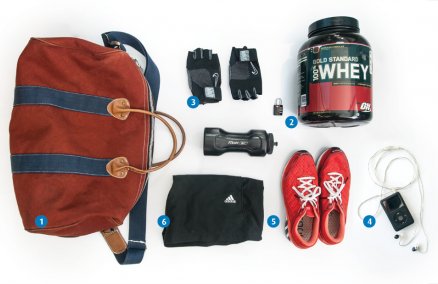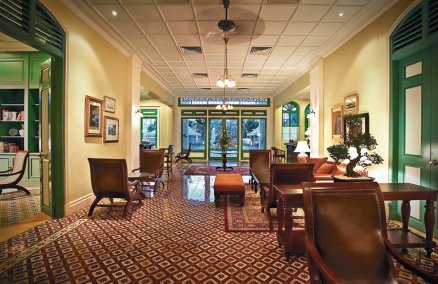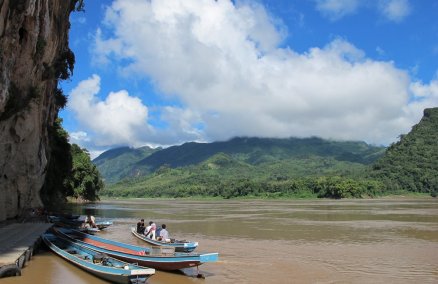Goose down comforters, swimming pools, room service and fancy wining and dining are important factors for a “good” holiday for most of us. For others, what makes their holiday worthwhile is “being good,” even if it means a lot of sweat, dirt and weird food, all in exchange for some genuine smiles. “Voluntourism” (volunteering plus tourism) is the new way to get out of the city to a place close to nature, to make a connection with locals and to help improve something, whether it be the environment or the living conditions of people much less fortunate than you. This can take many shapes: environmental work, teaching, building homes and taking care of the elderly, the disabled, animals or children. You might not return home with a tan and a full shopping bag, but the rewards and memories will put any 4-day/3-night beach package to shame.
This idea has yet to catch on among Thais. Working for others on your own dime, during your holiday to boot, still sounds like something verging on insanity. But these trips can turn out to be more fun and cheaper than a traditional vacation. Apart from the benefits of homestay (authentic local food, habitat and language, getting truly immersed into a community, experiencing real nature and the vibe of a place), what you get is to really communicate with locals and meet interesting fellow volunteers. Homemade yaadong, centipede naamprik, or taking a swim with the buffalos is not on any “close to nature” hotel’s list of features. So for the ultimate travel experience, and the opportunity to help others, here is who to go to.
Getting Ready | First Hand Experiences
Habitat for Humanity
Who: Habitat for Humanity is an organization that has the same kind of international brand recognition as Starbucks—except they don’t sell coffee: they make you work for others. It’s an independent non-profit group, run mostly by volunteers and financed by donations, with 2,291 affiliates worldwide. They specialize in building homes for those in need of adequate shelter. But the house owners don’t just sit back and watch their house getting built. This is a sweat equity business. People who want to enjoy the benefits of the program need to complete 50 hours helping to build their neighbors’ houses. The result is that volunteers work shoulder to shoulder with house owners and the neighbors. Most volunteers are foreign tourists, while Thais usually come on company trips.
Where: Habitat for Humanity is now working in 11 provinces in Thailand: Chiang Mai, Chiang Rai, Lampang, Khon Kaen, Udon Thani, Nakornratchasima, Bangkok, Royong, Phang Nga, Phuket, and Ranong.
Commitment: It can be a day, a week, a month, a year, or a lifetime—up to you.
You should know: They don’t provide you with accommodation, food or transportation—nothing. And you will understand the life of a laborer is pretty hard soon enough.
Feel-good factor: You know you are not helping a lazy bastard. You work with the house owner and his neighbors, while learning the culture and language. Who knows, you might get a travel companion or a free guide from there.
How to join: Contact them beforehand at SSP Tower, 15/F, 555 Sukhumvit 63, Klongton Nua, 02-711-6934, www.habitatthailand.org. Walk-in volunteers are occasionally accepted as well. You can help them also by sponsoring a house for B120,000 or by giving any amount you are comfortable with.
Holidayish rating: 2/5
There’s nothing for leisure provided, except interaction between you and the locals. Making this a little bit more of a holiday is entirely up to you.
Kroobannok
Who: Supported by the Mirror Foundation and sponsors, this non-profit foundation welcomes volunteers to help educate hilltribe children. It is popular among young Thais, and the volunteers are mostly students, with very few foreigners. So far it has completed 89 trips, each to a different hilltribe village. Kroobannok allows volunteers to teach and, in turn, be students of life. They believe that by teaching us city animals, it opens the horizons of doi kids as well.
Where: Each trip is to a different hilltribe in Chiang Rai.
Commitment: Five-day/four-night. But if you have a group of people, you can ask them to customize your trip.
You should know: Some hilltribes can be as far from the road as a one-day walk and you will need physical strength as well as a light pack—so much for the Louis Vuitton trunk, there are no sherpas in this package. The food can be very different from what you are familiar with and the weather at night can be freezing. They don’t provide transportation to Chiang Rai.
Feel-good factor: It can be a good cultural exchange. You stay in a villager’s house, living with them and eating with them. It’s a chance to take a deep breath of fresh air also. There will be no pollution, no mobile phone signal and no traffic jam, so you have to live without technological interference for a few days. In most places, the scenery is also stunning. Most villagers treat volunteer teachers with high gratitude and respect.
How to Join: The next Kroobannok trip is scheduled for March 1-5 to an Akha village. You can register by logging on to www.bannok.com/volunteer or call Kroo Jadet at 08-7183-3705. The fee is B890 per person, not including transportation to Chiang Rai.
Holidayish rating: 3/5
They will take you to a signature place of this province where you can eat local food before heading to the village. Apart from trekking to your destination, the kids will take you on their fishing, or wood-gathering trips.
Tsunami Volunteer Center
Who: Established in 2005, the center helps people affected by the tsunami. Supported by various NGOs and private sponsors, it works hand in hand with locals and volunteers from around the world. It works on both physical and mental relief: home-building and repairing damage but also education and putting smiles on people’s faces. They need volunteers with various skills: construction, translation, IT, communications, fundraising, human resources and English teaching.
Where: Khao Lak, Phang Nga.
Commitment: Usually one month.
You should know: Not good for superstitious people.
Feel-good factor: It’s Khao Lak, you know, where the sea is pure and scenic, especially since the Big One. Homestay with a local family will put you in touch with Southern culture as you go fishing, make batik and collect rubber from trees. Translators are provided for non-Thai speakers. It’s quite a full option tour with everything from labor work to teaching.
How to join: Contact Tsunami Volunteer Center, 26/10 Moo 7, Takua Pah, Phang Nga. 076-485-541, www.tsunamivolunteer.net. Or call Voluntourism Project Manager, Khun Krongkaew at 08-9882-8840.
Holidayish rating: 4/5
They design the program for leisure and comfort as well as for goodwill.
Jumbo River Kwai
Who: Jumbo River Kwai is a travel agent specializing in holidays in Kanchanaburi. Most of its customers are foreigners from the USA and Scandinavia. Their River Kwai Volunteer Program aims to encourage kids and adults in rural areas to speak English, as English teachers are still in high demand in these remote areas.
Where: Rural areas of Baan Mhong Khao or Moobaan Srisawat in Kanchanaburi.
Commitment: It totally depends on you.
You should know: Teaching English is actually a real job in some parts of the world. Can you handle it?
Feel-good factor: You will stay with a local family far from civilization and surrounded by nature. You will get a chance to observe and help with rice farming and other local activities. And don’t forget to try to pick up the lovely Kanchanaburi accent.
How to join: Contact R.S.P. Jumbo Travel 3/13 Chao Khun Nen Rd., Muang, Kanchanaburi, 034-514-906, 034-512-280, www.jumboriverkwai.com. A one-week trip is B18,600 for two.
Holidayish rating: 4/5
They are professional tour agents so you should have fun.
Cultural Restoration Tourism Project
Who: CRTP is an international project that works with local communities to restore their cultural treasures. It is a self-sufficient organization and the donations from volunteers coming to visit these places are redirected to the local communities. With long-term impact on the communities in mind, CRTP allows volunteers to immerse themselves into the local culture, work on building up the economy and provide environmental and social sustainability. Their current project is now in Nepal.
Where: A centuries-old monastery in Chairro, Nepal.
You should know: It’s not bad, but you’re going to have to pay the kind of cash most of us cannot afford. Plus you have to arrange for your flights to and from Nepal and a night’s accommodation in Kathmandu. Training is provided, though.
Feel-good factor: Nepal is a country of rich culture and stunning art and scenery. Apart from learning the culture, food and the language from the locals, you will be learning and seeing more about the art, beliefs, religion and architecture. And the whole temple thing is a bit Indiana Jones-esque, isn’t it?
Commitment: 12 days.
How to join: The 2007 schedule is April 22-May 3, May 5-16, May 19-30 and June 2-13. To book, you have to make a US$500 deposit (B17,048) on your total US$2,495 (B85,068, ouch!) donation. Visit www.crtp.net or email [email protected].
Holidayish rating: 4/5
It includes some sightseeing and accommodation in a local village. But most of all, it’s Nepal—wow.
North by North East
Who: North by North East is a travel agency focusing on responsible tourism in Thailand, Laos, Cambodia, Myanmar and other countries. It has offices in Luang Prabang and Thailand. Most of their customers are foreigners, but they welcome Thais as well. They organize regular tours as well as voluntours which can be customized to their client’s wishes.
Where: Luang Prabang, Laos and Nakorn Phanom.
You should know: Professional tour agents can sometimes make voluntourism feel less genuine and adventurous.
Feel-good factor: They tailor your trip to what you like. It can be tsunami relief, school building, orphanage assistance, cultural conservation or rural education. But things are also up to what locals need at the time of your trip. Homestay ensures you get the “real deal”.
Commitment: Days or months, your choice. But usually it’s a two-week trip with about nine days of volunteer work.
How to join: Contact 8/40 Ban Nongkham, Sangkalok Rd., Luang Prabang, Laos, www.north-by-north-east.com/voluntourism.asp. Prices usually are usually US$60-100 (B2,026-3,376) a day.
Holidayish rating: 4/5
It’s five days of pure fun and nine days of culture shock. Leave it to the pros to make it a great holiday overall.
The Foundation for Karen Hilltribes in Thailand
Who: Supported by the Karen Hill Tribes Trust, a UK-based charity, this foundation aims to help improve heath, support education and encourage sustainable living for Karen people in Thailand.
Commitment: Usually they need teachers for a semester of three months or for the summer break (eight weeks).
Where: In a remote Karen community.
You should know: You’ll need to commit a big block of time.
Feel-good factor: You will be living with the Karen and even be given a Karen name. You will teach English to children in a local school and learn Karen at the same time. It’s a great way to taste the food, the life and the culture of the Karen.
How to join: Contact the office at 16/4 Soi Intamara 15, Sutisarn Rd., Payathai or call Julia Virulchanya at 02-271-1787, 08-1899-5563. www.karenhilltribes.org.uk. The prices are around €1,000-1,750 (B43,898-76,707) for a three to six month trip or €600 (B26,291) for eight weeks.
Holidayish rating: 4/5
There’s plenty of time for traveling since you’re staying there for so long.
Eco Explorer Thailand
Who: As the name suggests, Eco Explorer Thailand is all about eco-tourism. They provide multiple choices, from homestay travel, veterinary travel to volunteer travel. As they show you the beauty of nature, they also try to promote nature conservation.
Commitment: Recommended for two to four weeks.
Where: They are now offering six voluntourism programs: Elephant Mahout Project (Pattaya), Dusky Langur Conservation Community Project (Prachuabkirikhan’s Khao Sam Roi Yod National Park), Gibbon Rehabitation Project (Phuket), Wild Animal Rescue and Education Project (a rain forest near Baan Talae Nork, not far from Ranong), Kho Tao Animal Clinic (Surat Thani’s Koh Tao Island) and Umphang Homestay English Teaching (Tak).
You should know: These jobs might get your hands dirty, even stinky.
Feel-good factor: If living in the wild is your dream, here’s your chance. These guys are all about real nature and real animals. You will be learning and also educating locals about animal conservation and might become a real mahout in the end.
How to join: Contact 217/1 M00 12, Soi 15, Thepprasit Rd., Tambol Nongprue, Banglrmung, Chonburi, 038-303- 941, www.ecoexplorerthailand.com. Or email [email protected]. B21,824 for the first week and B20,825 for any additional week(s). Walk-in prices are B14,000 for a week without transportation.
Holidayish rating: 2/5
You will be working a full 8 hours a day. That doesn’t leave much time for touring.
Remember the Boyscout Motto: Be Prepared
Life may not be easy out there. There might not be malls or 7-Elevens for you to grab things you need to survive. Before you go, make a list of what to take with you. Here are a few suggestions.
In General:
Books. In a place that may or may not have electricity, you won’t be able to kick back and watch TV, so a book may come in handy. A phrase book for whatever language they speak where you’re going will also help. Check out www.amazon.com or browse around the gigantic Kinokuniya at Siam Paragon (3/F, 02-610-9500/-19).
Notebooks. This could be your journal, diary or sketchbook. Preserve your experience by drawing or writing things down. For cute and lovely ones, try Mola (442/6 Siam Square Soi 11, Rama 1 Rd., 02-654-6276, www.mola.co.th).
Sleeping Bag. If the weather’s too cold or the mattress too hard, your very own sleeping bag can make a huge difference. An air mattress and pillow might be good, too (if you have room in your bag). You can find a sleeping bag for around B400-1,600 and an air mattress for about B1,200 at Karana Travelgear (481-3 between Sukhumvit 25-27, 02-261-5210/1, www.karanatravelgear.com). The lighter the better if you plan on trekking.
Food. We know it’s all about experiencing the local flavors, but the cuisine du jour may not look too tasty all the time for you. It’s not a bad idea to bring something to eat for emergencies. It’s also something you can share with the locals.
Medicine. Smart travelers pack First Aid kits “just in case.” Bandages, paracetamol, Actifed (good for helping you sleep) and mosquito repellent are always good. In some places, you might need some vaccines, too—ask your doctor.
Flashlight. Quite helpful at night, especially for places that don’t have electricity. Equinox (3/F Siam Discovery, Rama 1 Rd., 02-658-0340, www.equinoxshop.com) has hand-held, key ring and head-band torches for around B590-3,500.
For Tech-addicts:
GPS Navigator. In case you get lost, and there’s no hero by your side, this will help. The Global Position System can keep an eye on you, no matter where you are…as long as your batteries don’t run out. GARMIN eTrex GPS Navigator is available at Sport Mall Global (2/F, Siam Paragon, B8,000).
Satellite Phone. With this high-tech gadget you will never lose touch, wherever you are. You can talk or send faxes in places with no phone signal. The weight is quite light, too—model R190 weighs just 210g with the battery. Prices are around B25,000-45,000. Check out AceS (www.acesthailand.com, 02-502-4000).
Emergency Mobile Charger. Lengthen your chitchatting hours with this special charger that runs with standard batteries. Charge-N-Go is available at Equinox (3/F Siam Discovery Center, 02-658-0340, www.equinoxshop.com, B799).
For Chic Chicks:
Mineral Water Spray. Helps refresh and cool your face when the washroom is too far away. Try Evian, available at Boot’s.
Body Deodorant. Very important, seriously. Always remember to use this so your co-workers don’t faint.
Waterless Hand Washing Gel. Wash your hand instantly, anytime, anywhere. B65 at Equinox (3/F Siam Discovery Center, 02-658-0340, www.equinoxshop.com).
Baby Wipes. Another useful item for cleaning your hands, face or body away from a washroom. Just don’t imagine a baby’s butt while wiping. Available in most supermarkets.
Top
First Hand Experience
Thanyathorn Kosetskornpong (Plum), 25, student at Thammasat University
“The Kroobannok trip with Mirror Foundation really left an impression. The hilltribe kids are pitiful. Their parents are poor and don’t know how to earn a living, except going in town each day, 40-50km away, to work at farms or gardens. They leave the children at home unattended. The kids cannot even sing the national anthem. Some of them are of school age but never go to school because the parents don’t have money. I taught them how to sing our national anthem. Some of them don’t have manners. They are very skinny, with big heads and lack nutrition. They eat nothing but naamprik and salt…they don’t even have sugar.”
Phansiri Mongkolprasit (Fon), Assistant Manager, Public Relations Officer at CitiBank
“I’ve been to Korat with Habitat for Humanity many times. It’s part of CitiGroup’s initiative to give something back to society. CitiGroup has long been helping the organization in sponsoring houses each year. It’s a three-day trip, with accommodation provided by the company. You cannot finish building a house in three days, but I feel really good to be able to give a little help to the villagers. The work is quite laborious, digging earth or carrying things, and you work in the sunlight all day, but it’s a good feeling—seeing the smile of the locals and hearing thanks from them. Even though we had box lunches, sometimes the locals cooked for us. It’s usually simple dishes like khai jiaw but we really appreciate their generosity. I got to sightsee a bit, too.”
Peter Wowkowych, 44, architect for Sony Pictures Entertainment, California, USA
“The work with the Cultural Restoration Tourism Project can be as hard or as easy as you make it. We spent two weeks restoring a centuries-old Tibetan Buddhist monastery—Chairro Gompa. Some people spent all their time restoring the artwork, using fine brushes to clean the paintings and woodwork from years of dirt and debris. Others, including myself, divided our time between working on the artwork and more labor-intensive work: hauling out collapsed timber roofs and stone walls from the monk’s quarters of the monastery complex. It was such a new experience for all of us that every day brought new discoveries as we cleaned the art. Even when hauling timber, we would discover interesting details of the buildings buried in the years of rubble. The scenery of the snow-capped Himalayan Mountains was a stunning place to work, as well. To be surrounded by the highest mountains on Earth is an awe-inspiring feeling. I still keep in touch with many people both in the volunteer group as well as some of the Nepalese people we worked with. I quickly became close friends with the Kathmandu architect working on the project with us. Since I too am an architect, we had much in common.”
Claudia Thompson, 57, carpenter, California, USA
“I’m volunteering for Elephant Mahout Project with Eco Explorer and I’m very happy about it. I’ve learned some amazing skills and it’s an honor for me that I can do this for the elephants. I’ve always been interested in elephants and working here just increases my love for them. There are ample facilities and life is quite easy. I’ve got many friends here, Thais and British. I want to tell other people that this is a once in a lifetime experience. Working with animals is very important and we still need a lot more volunteers.”
Top






















